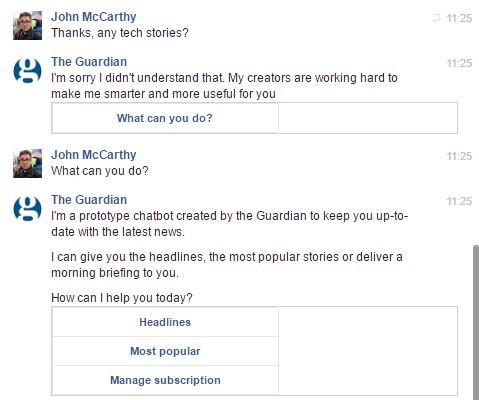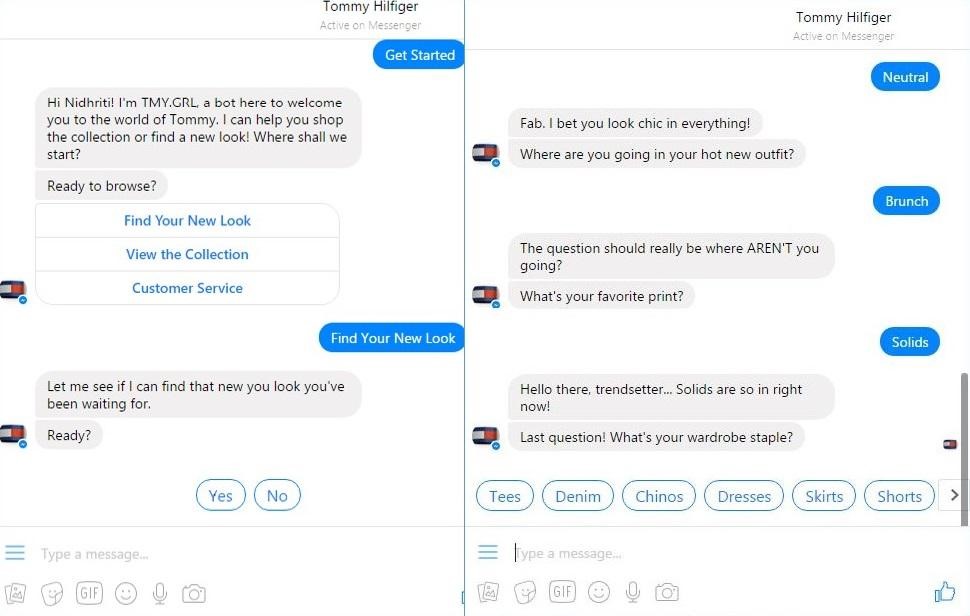Where Bots Sit in Your Content Marketing Strategy
The revolution of how we interact with online content has started off with RSS (Rich Site Summary) feeds which retrieve the latest content across the web and allow users to stay up to date on the topics and the sites they are interested in by notifying them through their feed reader of choice. Then, with the rise of the mobile Internet, we shifted away from installed software on our desktops to mobile apps at our fingertips. The explosion of mobile apps reached a tipping point in 2008, and just like every other technology trend, it settled in and passed the torch to these support applications called bots. Today, more and more enterprises are making strategic bets on conversational, bot-powered services as the next vehicle for business interactions to drive better customer and employee engagement. Therefore, in this article, we will take a closer look at some use cases and best practices.
Summary) feeds which retrieve the latest content across the web and allow users to stay up to date on the topics and the sites they are interested in by notifying them through their feed reader of choice. Then, with the rise of the mobile Internet, we shifted away from installed software on our desktops to mobile apps at our fingertips. The explosion of mobile apps reached a tipping point in 2008, and just like every other technology trend, it settled in and passed the torch to these support applications called bots. Today, more and more enterprises are making strategic bets on conversational, bot-powered services as the next vehicle for business interactions to drive better customer and employee engagement. Therefore, in this article, we will take a closer look at some use cases and best practices.
Acting as a virtual agent, bots are capable of addressing a various range of questions through a various range of modalities. As Gartner puts it, they can deliver “from simple informal, bidirectional text or voice conversations such as an answer to ‘What time is it?’ to more complex interactions such as collecting oral testimony from crime witnesses to generate a sketch of a suspect.” No wonder why this technology is considered a game changer and inevitable for many industries, more precisely, the commerce world.
When it comes to the benefits of using bot-powered services, Parthasarathi V., Lead Consultant for the Workplace Reimagination practice at TCS Digital Enterprise, seems to manage engrossing all the major benefits to enterprises in this statement: “Through conversational software, an enterprise can simplify and reimagine business processes, and reduce and automate workflows through context-aware intelligence systems. It also enables users and systems to have meaningful interactions, working in tandem to meet business goals.” Here are some of the significant business outcomes:
-
Productivity
-
Scalable customer service
-
More relevant customer service
-
Omnichannel customer experience
-
Globalization
-
Brand personality
If you would like to learn more about these systems’ significant business outcomes, I recommend you check out one of my recent articles on this topic titled “Are Conversational Systems the Future of Web Interface?”
Despite its obvious benefits, as is typical in the adoption of new technologies, the pioneer organizations that got so hyped on the idea of implementing bots to engage with their audiences and automate their work processes experienced some failures as initially, bots didn’t work as planned. As an example of its limits, when Guardian first jumped into Messenger chatbots, John McCarthy from thedrum.com ran an experiment with the Guardian's new chatbot. When he asked for ‘tech’ stories it was incapable of delivering any content from that category:

The fixated perspective and bad experiences about interacting with automated systems became the coup de grâce for bots adoption. While the technology is still in its infancy, as artificial intelligence continues to evolve, most of the initial issues began to be ironed out. We will just have to see its prime time and good news, it won’t take too long. The combination of two of the biggest bot platforms, Facebook Messenger and KIK has already reached over a billion users.
As a marketer, you may think that it is too early to adopt this new content delivery channel, then let me respond to that with a statement by Kipp Bodnar, Chief Marketing Officer, Hubspot: “Marketers’ best leverage exists when there’s a new audience that’s growing but not a lot of competition trying to reach that audience. When you invest in an emerging technology, you can be in front of a growing audience in a far less competitive landscape.”
While having a technology that utilizes machine learning and natural language processing, it also comes with their own set of risks. Take Microsoft’s Twitter bot, Tay as an example. For those who are not familiar with the news on how Microsoft took Tay offline within 24 hours of launching the bot, Tay was designed to personalize her interactions with users through responding to their random questions or even repeating users’ statements back to them. It didn’t take too long for humans to teach Tay to make some racist and inappropriate statements. The tech giant learned the hard way not to remove the part about teaching a bot what “not” to say. From the development equation. “The AI chatbot Tay is a machine learning project, designed for human engagement. It is as much a social and cultural experiment, as it is technical. Unfortunately, within the first 24 hours of coming online, we became aware of a coordinated effort by some users to abuse Tay’s commenting skills to have Tay respond in inappropriate ways. As a result, we have taken Tay offline and are making adjustments,” said a Microsoft spokesperson.
On the retail side of things, more brands have started harnessing the technology to deliver content, increase engagement, and strengthen brand affinity. Tommy Hilfiger, for example, launched a chatbot on Facebook Messenger where the brand enables personalized, scalable conversations with consumers. It essentially learns to understand consumer habits, context, and intent to better predict and provide the content, information or engagement users are seeking. To put this into perspective, here are some examples from the conversations between the bot and the consumers.

Sephora, a beauty retailer, on the other hand, launched a Kik chatbot that offers a quiz to any users to message it. The bot uses the quiz results to serve up personalized product recommendations and beauty tips.
I was fortunate enough to interview Riad Hijal, Global VP, Omni-Channel Commerce Solution &  Strategy, SAP Hybris on the future of their platform and the e-commerce space. One of the questions asked was about the trends he sees on the horizon, he replied: “The trends of artificial intelligence (AI) and machine learning are increasingly being infused into front-end and back-end operations to ensure consistent, contextualized customer experiences. Aligning with this trend, conversational commerce is taking off as it enables users to streamline the buying process. This is done by quickly responding to any last minute questions that left unanswered could potentially halt or stall the purchase decision. We expect to see an influx of vehicles that enable this such as chatbots, virtual concierges, and digital/virtual assistants. However, these capabilities will only be made possible through integration with a modern, agile, and API-enabled commerce platform such as SAP Hybris Commerce.”
Strategy, SAP Hybris on the future of their platform and the e-commerce space. One of the questions asked was about the trends he sees on the horizon, he replied: “The trends of artificial intelligence (AI) and machine learning are increasingly being infused into front-end and back-end operations to ensure consistent, contextualized customer experiences. Aligning with this trend, conversational commerce is taking off as it enables users to streamline the buying process. This is done by quickly responding to any last minute questions that left unanswered could potentially halt or stall the purchase decision. We expect to see an influx of vehicles that enable this such as chatbots, virtual concierges, and digital/virtual assistants. However, these capabilities will only be made possible through integration with a modern, agile, and API-enabled commerce platform such as SAP Hybris Commerce.”
When it comes to messaging apps, I am, personally amazed by the success of China’s voice-powered mobile app WeChat as it has taken off to the tune of 800 million active users every month. The platform can hail a taxi, order takeout, buy movie tickets, and even customize a retail purchase according to your needs. Over 10 million businesses in China have WeChat accounts. WeChat includes ten million third-party apps. Almost any brand from media companies, banks, celebrities, or startups can make an app on WeChat. Individuals with accounts can access APIs for features like direct messaging, voice messaging, payments, and location. Andreessen Horowitz's Connie Chan says: “WeChat accounts have become so popular, some startups even test their apps by launching on WeChat before creating a standalone app.” More importantly, one in five WeChat users purchases products or services from any official account in WeChat's app by sharing their banking information or credit card number. Even though the US and Europe still lag behind China in terms of social commerce platforms, the situation is about to change as many more technology providers are making enhancements to their platforms to support social purchasing. For instance, with its latest upgrade, Oracle enabled marketers and merchandisers to customize responses during the conversations powered by an Oracle-connected chatbot on Facebook Messenger or Amazon Alexa.
With the door now opened, other industries are following suit. Organizations utilize the technology not only to serve their external content consumers but also internal employees such as marketers who are doing market research or examining their website performance. On the other hand, BOT-fraud will pose a huge challenge for marketers as the third annual Bot Baseline Report reveals that the economic losses due to bot fraud are estimated to reach $6.5 billion globally in 2017. The same report also provides a number of action steps for the industry to combat fraud going forward, including:
-
Demand transparency for sourced traffic.
-
Refuse payment on non-human traffic in media contracts.
-
Avoid excessive restrictions.
-
Encourage Media Rating Council (MRC) accredited third-party fraud detection on walled gardens.
-
Support the Trustworthy Accountability Group (TAG).

Venus Tamturk
Venus is the Media Reporter for CMS-Connected, with one of her tasks to write thorough articles by creating the most up-to-date and engaging content using B2B digital marketing. She enjoys increasing brand equity and conversion through the strategic use of social media channels and integrated media marketing plans.